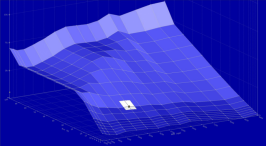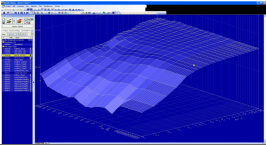I think you're much more likely to spin going from 50 to 100% throttle in an instant than you are going from 0-50% in an instant.
All sporty manufacturers, when they change the throttle mapping (like with the sports button), put more throttle opening into the first part of pedal travel, so its basically like pressing the pedal more than you actually have and it feels faster Especially in normal driving where actually you don't use full throttle often at all. No one (except PD) puts more throttle opening into the last part of pedal travel. Because it's a really bad idea.
Here's the "Sport" throttle map from an Aprilia Dorsoduro 750 (motorcycle). In fact, it's a torque "request" map for the ride-by-wire, the ECU uses a model to predict torque output from the operating conditions and trims the throttles accordingly. All very complicated, but also 10 years behind the curve by now. Designed by MM according to their experience with Ferrari.

The step up at full throttle is just to ensure you do get "full throttle" and the model doesn't accidentally limit the engine's output in particularly favourable atmospheric conditions. Notice it's otherwise linear at high rpm; this engine makes its torque in a band between 6 and 9 thousand rpm. One weird aspect of this system is that the throttles are automatically opened further for a given input / demand when at altitude. Of course, it still runs out of breath sooner.
The throttle (self-control, feedback) map itself looks like this:

That includes artificial limiting of the throttle opening at certain engine speeds to flatten the torque curve (no sudden surges: extra controllability?), and this limit takes precedence over the torque request.
When tuning systems like this, if the torque curve changes significantly, you have to go in and tweak the demand map as well.
This might all seem off-topic, but it's important to realise that all this chat about throttle position and engine torque are really not so straight forward in this day and age, as far as the real (esp. road) machinery is concerned.
In a race machine, the use of drive by wire throttles is for response and consistency (ECU model predicting output torque); i.e. it's made to be easy to modulate at all times. It doesn't need an abstracted layer of extra control for emissions, driveability and efficiency, just like the game.
The throttle just needs to be linear at the extreme, and soft at onset. In the game, the output torque can be controlled directly, so that should be easy to achieve.



 Have the G29 and if i remember correctly when playing with the beta test and first getting the game the throttle input was really great,smooth and linear.
Have the G29 and if i remember correctly when playing with the beta test and first getting the game the throttle input was really great,smooth and linear.
